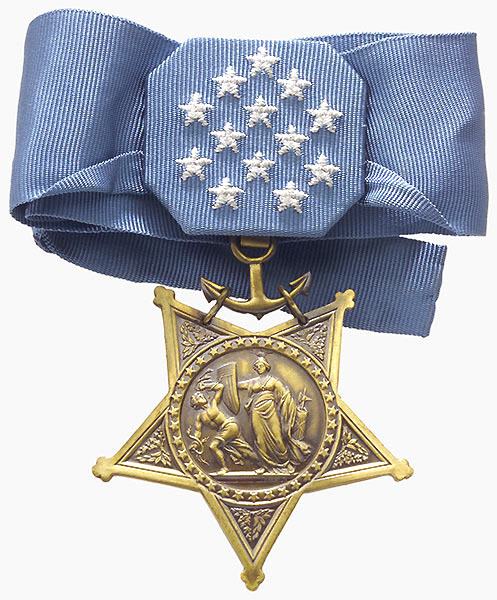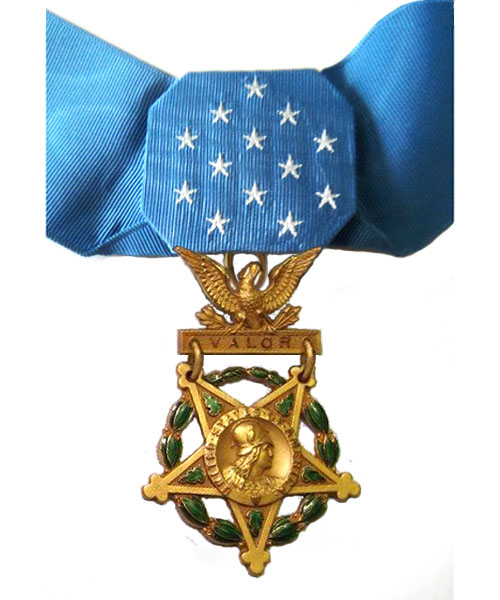Live by a code.
Dakota Meyer set out on a dark September morning as a Marine corporal and left the blood stained Ganjghal valley a hero. Though, if you asked him, he wouldn't admit to heroics.
A coalition group of Marines, Soldiers and Afghan National Police were ambushed en route to the village of Ganjghal by a Taliban war-band of 100-200 fighters.
Early in the fighting a group of four Marines and about 20 Afghans were pinned down in the village. Another 60 or so Afghans were either killed, wounded or pinned just outside of the village.
Meyer and fellow Marine, Staff Sgt. Juan Rodriguez-Chavez, repeatedly drove a modified Afghan Gun-truck (think S-10 with a machine gun bolted to the roof) into the village in an attempt to rescue the isolated Marines. During each instance Meyer got off the truck, loaded wounded Afghans and returned them to an evacuation point. At times the Taliban fighters were as close as 25-30 meters as they tried to overwhelm the truck (that's 100ft, the width of an average residential lot or 1/3 of a football field). He personally evacuated 12 wounded Afghans and laid covering fire for Marines and Afghans as they fought clear of the ambush, in the process killing as many as 60 enemy fighters. The battle lasted 6 hours.
The Marine code is:
Honor, Courage, Commitment.
The motto, Semper Fidalis, means Always Faithful.
https://youtu.be/mev2exb1C0g

CORPORAL DAKOTA L. MEYER
In the end, Dakota Meyer was not successful in saving the four trapped Marines. But he was faithful to them beyond their deaths. He would not give up the fight until their bodies had been recovered and preserved from further harm. His citation follows:
The President of the United States in the name of The Congress takes pleasure in presenting the MEDAL OF HONOR to

CORPORAL DAKOTA L. MEYER
UNITED STATES MARINE CORPS
For service as set forth in the following
For conspicuous gallantry and intrepidity at the risk of his life above and beyond the call of duty while serving with Marine Embedded Training Team 2-8, Regional Corps Advisory Command 3-7, in Kunar Province, Afghanistan, on 8 September 2009. Corporal Meyer maintained security at a patrol rally point while other members of his team moved on foot with two platoons of Afghan National Army and Border Police into the village of Ganjgal for a pre-dawn meeting with village elders. Moving into the village, the patrol was ambushed by more than 50 enemy fighters firing rocket propelled grenades, mortars, and machine guns from houses and fortified positions on the slopes above. Hearing over the radio that four U.S. team members were cut off, Corporal Meyer seized the initiative. With a fellow Marine driving, Corporal Meyer took the exposed gunner’s position in a gun-truck as they drove down the steeply terraced terrain in a daring attempt to disrupt the enemy attack and locate the trapped U.S. team. Disregarding intense enemy fire now concentrated on their lone vehicle, Corporal Meyer killed a number of enemy fighters with the mounted machine guns and his rifle, some at near point blank range, as he and his driver made three solo trips into the ambush area. During the first two trips, he and his driver evacuated two dozen Afghan soldiers, many of whom were wounded. When one machine gun became inoperable, he directed a return to the rally point to switch to another gun-truck for a third trip into the ambush area where his accurate fire directly supported the remaining U.S. personnel and Afghan soldiers fighting their way out of the ambush. Despite a shrapnel wound to his arm, Corporal Meyer made two more trips into the ambush area in a third gun-truck accompanied by four other Afghan vehicles to recover more wounded Afghan soldiers and search for the missing U.S. team members. Still under heavy enemy fire, he dismounted the vehicle on the fifth trip and moved on foot to locate and recover the bodies of his team members. Corporal Meyer’s daring initiative and bold fighting spirit throughout the 6-hour battle significantly disrupted the enemy’s attack and inspired the members of the combined force to fight on. His unwavering courage and steadfast devotion to his U.S. and Afghan comrades in the face of almost certain death reflected great credit upon himself and upheld the highest traditions of the Marine Corps and the United States Naval Service.
What is amazing about the Medal of Honor? Beyond gallantry and courage it requires self-sacrifice - it is only awarded to heroes who disregard their own safety in order to save their fellow heroes.
What is amazing about the battle on Ganjghal? It inspired actions resulting in two Medals of Honor and a dozen more citations for valor.
Circumstance draw Heroes out,
but their code fuels them in times of extreme.
Army Captain William Swenson also received the Medal of Honor for his actions that day and rather then fail in telling his story I want you to see it yourself. His actions were captured on film from a helmet mounted camera in a helicopter:
https://youtu.be/vgQPqIAlIg0
Captain Swenson lived by the Army code of Values:
Loyalty
Duty
Respect
Selfless Service
Honor
Integrity
Personal Courage
And the Warrior Ethos of:
I will always place the mission first.
I will never accept defeat.
I will never quit.
I will never leave a fallen comrade.
His Citation is below:
Official Citation
The President of the United States of America, authorized by Act of Congress, March 3, 1863, has awarded in the name of Congress the Medal of Honor to
Captain William D. Swenson

United States Army
For conspicuous gallantry and intrepidity at the risk of his life above and beyond the call of duty:
Captain William D. Swenson distinguished himself by acts of gallantry and intrepidity at the risk of his life above and beyond the call of duty while serving as embedded advisor to the Afghan National Border Police, Task Force Phoenix, Combined Security Transition Command-Afghanistan in support of 1st Battalion, 32nd Infantry Regiment, 3rd Brigade Combat Team, 10th Mountain Division, during combat operations against an armed enemy in Kunar Province, Afghanistan on September 8, 2009. On that morning, more than 60 well-armed, well-positioned enemy fighters ambushed Captain Swenson's combat team as it moved on foot into the village of Ganjgal for a meeting with village elders. As the enemy unleashed a barrage of rocket-propelled grenade, mortar and machine gun fire, Captain Swenson immediately returned fire and coordinated and directed the response of his Afghan Border Police, while simultaneously calling in suppressive artillery fire and aviation support. After the enemy effectively flanked Coalition Forces, Captain Swenson repeatedly called for smoke to cover the withdrawal of the forward elements. Surrounded on three sides by enemy forces inflicting effective and accurate fire, Captain Swenson coordinated air assets, indirect fire support and medical evacuation helicopter support to allow for the evacuation of the wounded. Captain Swenson ignored enemy radio transmissions demanding surrender and maneuvered uncovered to render medical aid to a wounded fellow soldier. Captain Swenson stopped administering aid long enough to throw a grenade at approaching enemy forces, before assisting with moving the soldier for air evacuation. With complete disregard for his own safety, Captain Swenson unhesitatingly led a team in an unarmored vehicle into the kill zone, exposing himself to enemy fire on at least two occasions, to recover the wounded and search for four missing comrades. After using aviation support to mark locations of fallen and wounded comrades, it became clear that ground recovery of the fallen was required due to heavy enemy fire on helicopter landing zones. Captain Swenson’s team returned to the kill zone another time in a Humvee. Captain Swenson voluntarily exited the vehicle, exposing himself to enemy fire, to locate and recover three fallen Marines and one fallen Navy corpsman. His exceptional leadership and stout resistance against the enemy during six hours of continuous fighting rallied his teammates and effectively disrupted the enemy's assault. Captain William D. Swenson's extraordinary heroism and selflessness above and beyond the call of duty are in keeping with the highest traditions of military service and reflect great credit upon himself, Task Force Phoenix, 1st Battalion, 32nd Infantry Regiment, 3rd Brigade Combat Team, 10th Mountain Division and the United States Army.

No comments:
Post a Comment